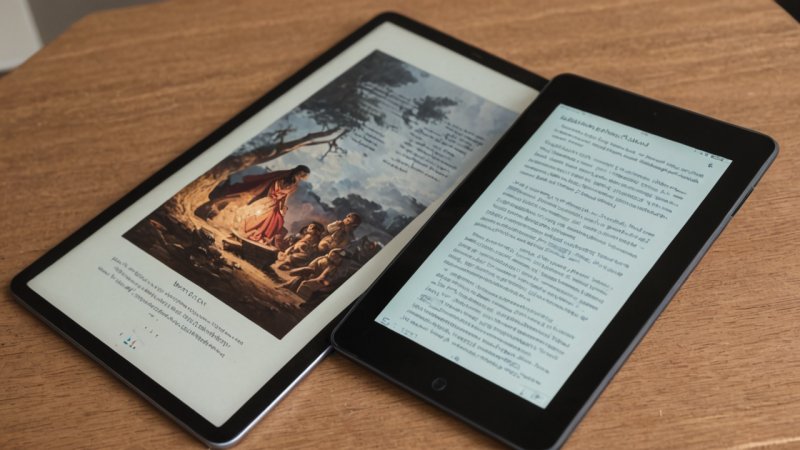The landscape of young adult literature has been significantly transformed by the advent of technology. As we delve into the comparison of traditional storytelling methods and those enhanced by digital mediums, we observe how these two approaches influence narratives, reader engagement, and overall literary experiences. Both formats offer unique advantages and challenges, shaping the way young adults connect with stories and characters.
Traditional Storytelling: The Classic Approach
Traditional storytelling methods in young adult literature often include printed books, audiobooks, and even live storytelling events. This approach has stood the test of time, providing readers with tactile experiences and a sense of nostalgia.
Pros of Traditional Storytelling
- Tactile Experience: The feel of a physical book in hand, the smell of the pages, and the act of turning them create a sensory experience that many readers cherish.
- Focus and Immersion: Reading a physical book often allows for deeper immersion, as there are fewer distractions compared to digital platforms.
- Established Formats: Traditional narratives follow well-established structures, making it easier for readers to understand and engage with the story.
Cons of Traditional Storytelling
- Accessibility: Physical books can be less accessible for some readers, particularly those with visual impairments or those who live in remote areas.
- Cost: Purchasing physical books can become expensive, especially for young adults who may have limited budgets.
- Limited Interactivity: Traditional books offer a linear reading experience, which may not cater to the preferences of a generation accustomed to interactive media.
Digital Storytelling: The Modern Approach
On the other side of the spectrum, digital storytelling encompasses e-books, interactive apps, and multimedia experiences. This modern approach leverages technology to engage readers in novel ways.
Pros of Digital Storytelling
- Accessibility: Digital formats can be easily accessed by anyone with an internet connection, broadening the reach of literature.
- Interactive Elements: Incorporating multimedia, such as audio clips, animations, and hyperlinks, can enhance storytelling and engage readers on multiple levels.
- Cost-Effectiveness: E-books and digital subscriptions often come at a lower cost compared to traditional printed books, making literature more affordable for young adults.
Cons of Digital Storytelling
- Distractions: Digital devices can lead to distractions from notifications and apps, making it difficult for readers to stay focused on the story.
- Screen Fatigue: Prolonged reading on screens can cause eye strain and fatigue, which may discourage readers from engaging with digital narratives.
- Variable Quality: The ease of self-publishing in digital formats can lead to a saturation of low-quality content, making it harder for readers to find quality narratives.
Engagement Strategies: How Each Format Captivates Readers
Engagement strategies differ significantly between traditional and digital storytelling. Understanding these methods offers insight into how each format captures the attention of young adult readers.
Engagement in Traditional Storytelling
Traditional storytelling engages readers through well-crafted prose, relatable characters, and immersive world-building. Authors can create a strong emotional connection through detailed descriptions and narrative arcs that resonate with the experiences of young adults.
Engagement in Digital Storytelling
Digital storytelling often employs gamification, social media integration, and interactive elements to maintain reader interest. Online platforms may allow readers to make choices that influence the story's direction, creating a personalized reading experience.
Literary Themes and Representation
The themes and representation in young adult literature are critical in reflecting the diverse experiences of young readers. Both traditional and digital storytelling can convey important themes, but the methods of representation can differ.
Traditional Themes
Traditional narratives often explore universal themes such as identity, friendship, and coming-of-age. These stories typically rely on established tropes and character archetypes, which can be comforting for readers seeking familiarity.
Digital Themes
Digital storytelling, however, can push boundaries by incorporating contemporary issues like mental health, social media influence, and cultural diversity. The interactive nature of digital platforms allows authors to experiment with narrative techniques that reflect modern experiences more dynamically.
Conclusion: Finding the Balance
In conclusion, both traditional and digital storytelling have their own merits and drawbacks in the realm of young adult literature. Traditional storytelling offers a tactile, immersive experience that fosters deep connections with characters, while digital storytelling provides accessibility and interactivity that resonates with today's tech-savvy youth. Ultimately, the choice between these formats may depend on individual preferences, reading habits, and the specific narratives being presented. By embracing both approaches, readers can experience a richer, more diverse literary landscape that caters to their unique tastes and needs.






